Modern interiors often focus on minimalism. But adding wood grain can bring depth and emotion to a room. The patterns and textures of wood make a space feel more welcoming and full of character.
Wood grain interior design is gaining popularity. Homeowners want to mix modern looks with the warmth of natural materials. By adding wood textures, you can make your home both stylish and cozy.
Whether you want to change one room or your whole house, knowing how to use wood grain and texture matters. It can greatly change how your home feels.
The Psychology of Wood in Interior Design
Wood in modern interiors adds a natural touch that affects our mood. It brings warmth and comfort, making it a favorite among designers. They use it to make spaces feel welcoming.
Wood’s texture adds depth and character to rooms, making them cozy and relaxing. Different wood grains change the mood of a space. Some woods feel luxurious, while others are more rustic and natural.
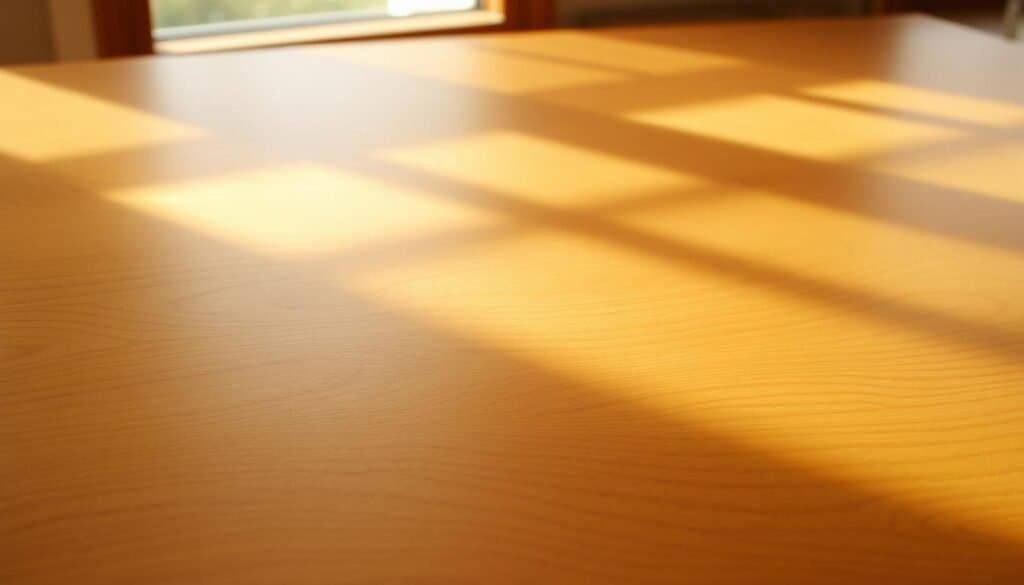
Designing with wood’s texture is an art that connects with our emotions. Wood grain offers a wide range, from oak’s lightness to walnut’s richness. The right wood can make a space look stunning and feel emotionally connected.
Wood’s impact on interior design is deep and varied. By choosing the right wood and texture, designers can create spaces that boost our well-being and happiness.
Understanding Different Wood Grains and Their Visual Impact
Wood grain has a big impact on how a room looks. Knowing about different wood grains is important for good interior design. It helps set the mood and feel of a room.
Each type of wood has its own grain pattern. Oak has straight, subtle grains, while walnut has dramatic, swirling ones. Blonde wood, for example, can make a room feel lighter and more open.
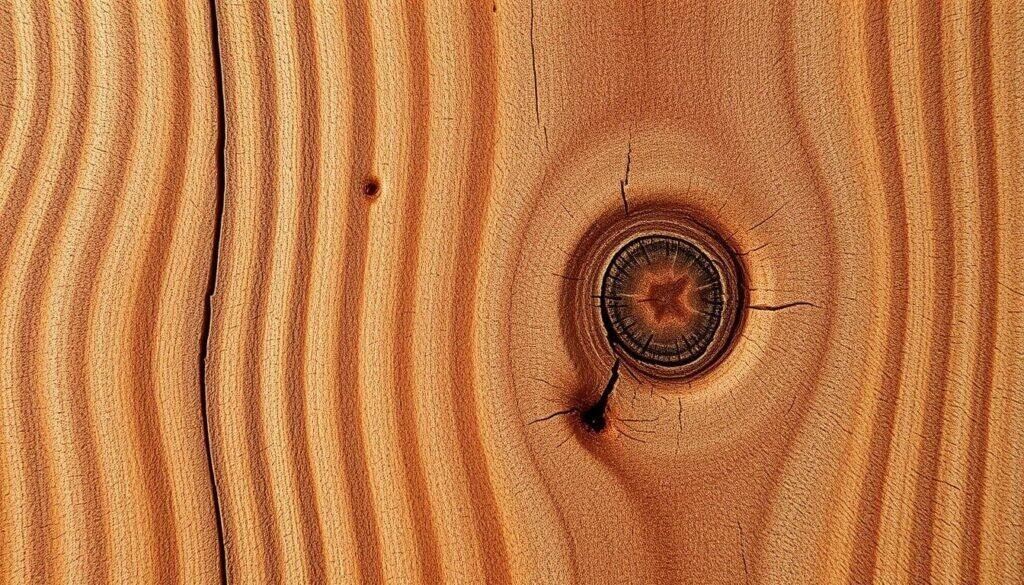
Wood texture design is more than just looks. It also makes a room feel warmer and cozier. A room with a strong wood texture feels welcoming and comfy.
Wood patterns can vary a lot. Some grains are fine and close together, while others are coarse and irregular. This lets designers pick the right wood for their theme.
Using different wood grains can make a design more interesting. Mixing wood with other materials can create a balanced and beautiful space.
Knowing how different wood grains look helps designers make better choices. They can create spaces that are both beautiful and useful. Whether it’s through wood texture design or choosing a specific pattern, the options are endless.
The Emotional Language of Wood Textures
Wood textures greatly affect the mood of a space. Different textures can make a room feel cozy or sleek. This changes how we feel in the room.
Rustic wood adds warmth and history, making a room cozy. Smooth teak wood, on the other hand, brings elegance, fitting modern spaces well.
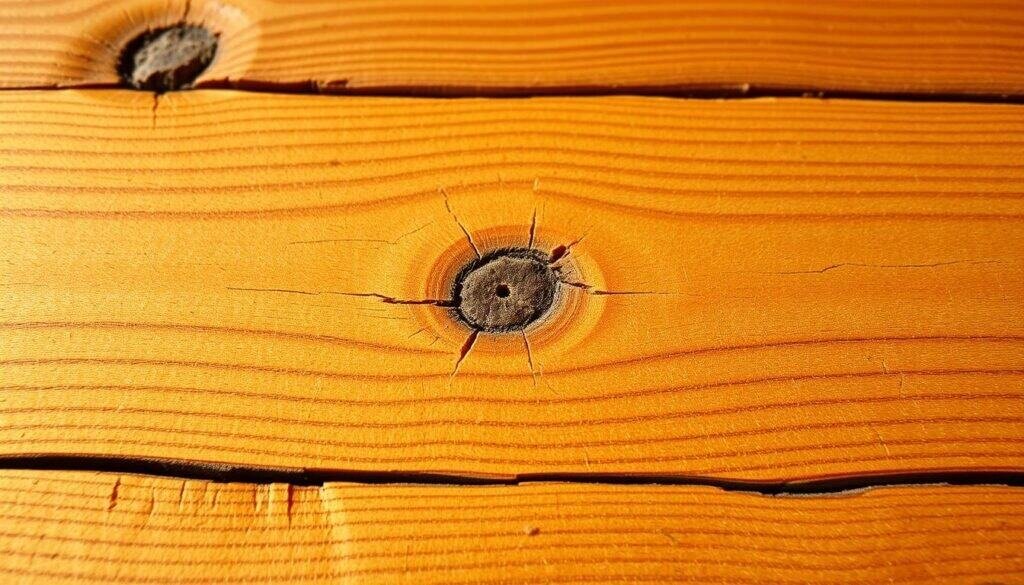
Using wood textures in design, like wall paneling, adds depth. The choice of wood tone affects the mood. Warm tones invite closeness, while cool tones open up a space.
Wood patterns can link different design parts, creating a unified feel. Designers use wood textures to evoke emotions, improving the space’s feel.
In summary, wood textures are key in design. They make spaces not just look good but also feel good.
How to Use Wood Grain and Texture to Add Character & Emotion to Modern Interior
Wood grain and texture are key in modern interior design. They can turn dull spaces into welcoming places. Adding wood elements brings warmth, depth, and emotion to any room.
Using statement furniture with wood grain is a great idea. A wooden coffee table or wall art can be a focal point. It draws the eye and adds warmth. Wood grain tattoos on walls or furniture also boost the look.
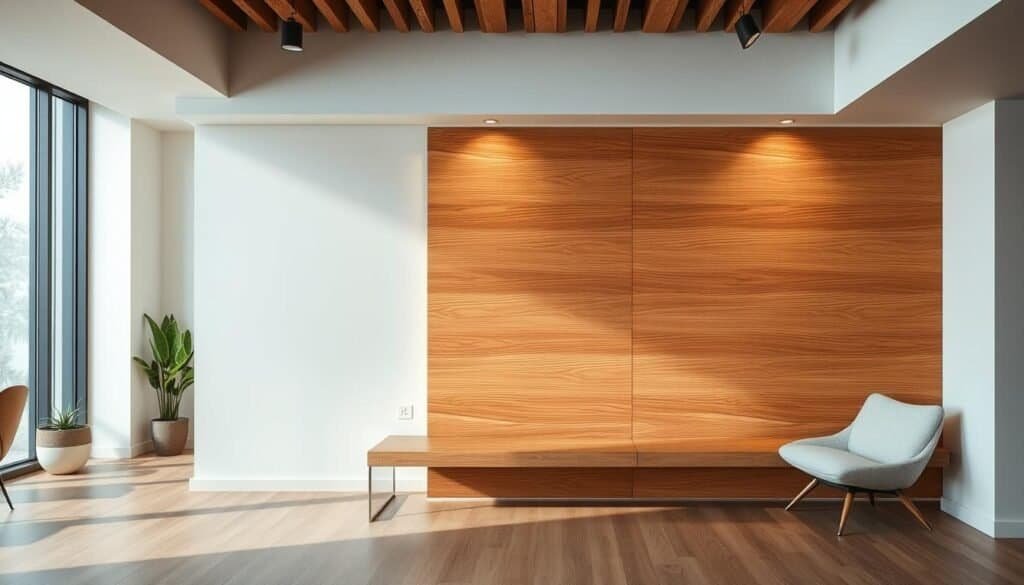
Choosing the right wood and finish is important for character. A matte finish looks modern and sleek, while glossy adds luxury. The right lighting can highlight the wood’s texture, making the space cozy.
Wood elements can make any space more interesting and warm. Adding wooden accents to simple decor creates a striking contrast. Wood grain’s natural patterns add beauty to plain spaces.
In summary, using wood grain and texture is a smart way to improve modern interiors. By carefully choosing and placing wood, designers can make spaces that look good and feel good.
Transforming Lifeless Spaces with Wood’s Organic Appeal
Wood’s organic texture design can turn dull spaces into warm, inviting areas. It adds natural beauty, making homes feel more welcoming. This change can greatly improve the feel of any room.
Wood grain texture is key in this transformation. It adds warmth and coziness, making rooms feel more welcoming. Whether it’s furniture, flooring, or wall paneling, wood grain can make a space look better.
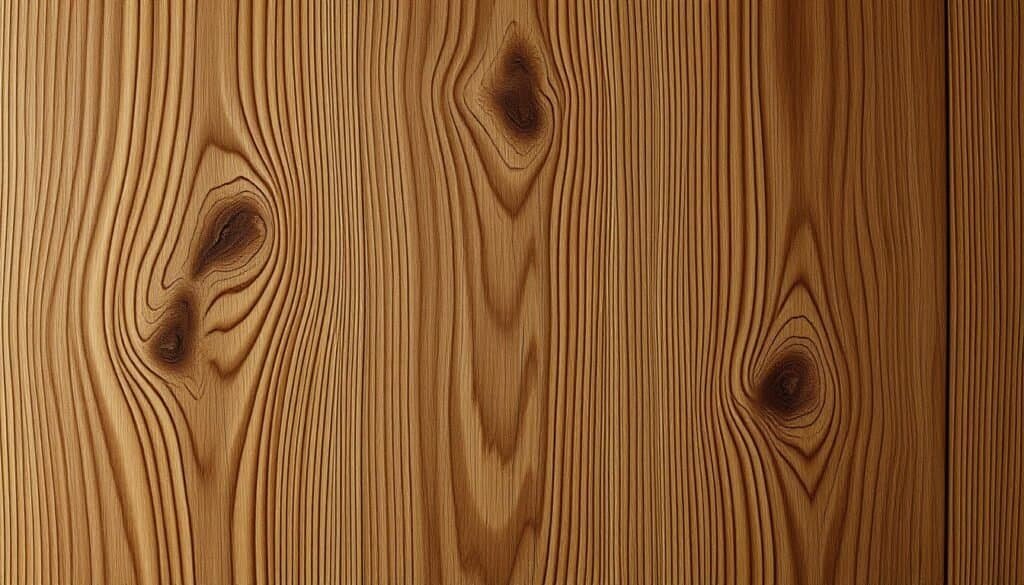
Raw and rough wood textures also add interest to interiors. They bring a natural feel to modern spaces, making them feel less sterile. This adds emotional depth to any room.
Using wood in design makes spaces beautiful and emotionally rich. It’s a simple way to make modern interiors feel more connected to nature. This makes homes feel more inviting to everyone who enters.
Selecting the Right Wood Species for Your Desired Atmosphere
Choosing the perfect wood species can greatly change your interior space’s feel. Different types of wood have unique textures and grains. These can either match or stand out against your decor.
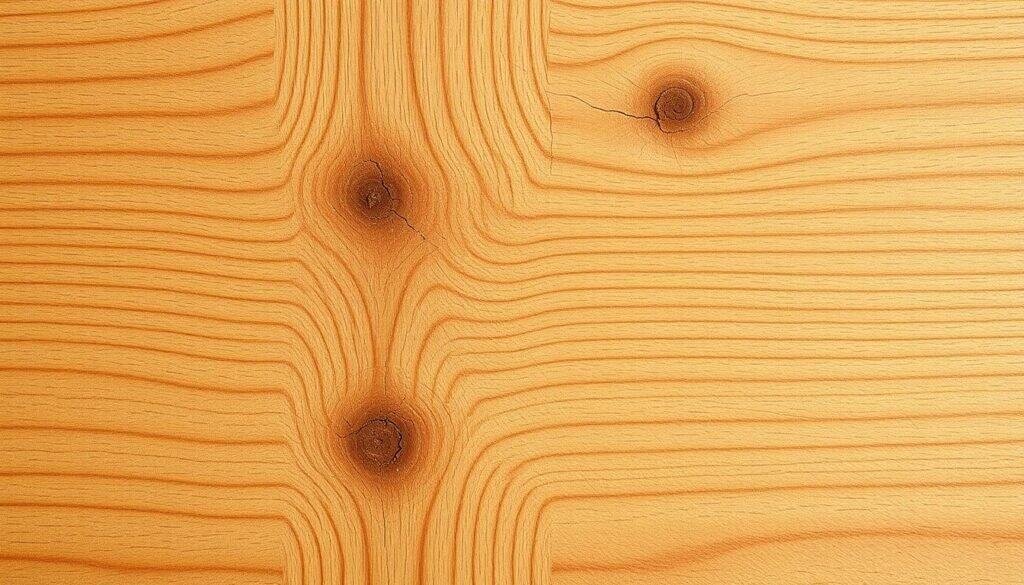
A smooth wood finish can add elegance, while a rustic wood texture seamless look can make a room feel cozy. Think about the look you want when picking a wood species.
Maple, Ash, and Birch Applications
Maple, Ash, and Birch are great for a light, simple look. They have a smooth wood finish and fit many design styles well.
Scandinavian-Inspired Spaces
In Scandinavian spaces, wood makes the room feel welcoming. Natural wood tones and textures add warmth to simple interiors.
Oak, Cherry, and Walnut Characteristics
Oak, Cherry, and Walnut have deep, rich tones and unique grain patterns. They’re perfect for a bold, luxurious feel and add depth with their rustic wood texture.
Transitional Design Applications
In transitional design, woods like Oak and Maple mix old and new styles. It’s about finding the right balance of wood grain texture with other elements for a welcoming space.
Choosing the right wood species and considering grain and texture can greatly improve your home’s atmosphere. For more tips and wood reference, talk to an interior design expert.
Wood Textures in Living Spaces: Creating Conversation Areas
Using wood textures can make your home feel cozy and inviting. It turns a room into a place where people want to gather. Wood’s natural warmth and unique patterns make it perfect for creating a welcoming atmosphere.
Wood textures add depth and interest to any room. A wooden coffee table or a wooden wall art can become a conversation starter. It draws people together, making them want to talk.
Adding wood textures to your decor is easy. You can start with a wooden accent wall or create custom furniture. Techniques like wood pattern drawing make wood surfaces more beautiful and engaging.
If you enjoy DIY, learning to draw wood texture is a great skill. It’s useful for many woodworking projects, from making furniture to creating wood art.
Wood textures can make your living space more social. It turns your home into a warm place where everyone feels welcome. It’s perfect for creating memories with family and friends.
Bringing Warmth to Kitchens Through Wood Grain
Kitchens can become cozy retreats with wood grain design. Using wood for cabinetry adds a natural touch. It brings warmth and comfort to the space.
Wood grain designs vary, from maple’s fine grains to oak’s bold patterns. This variety lets homeowners pick a wood that fits their kitchen’s look. A wood texture sketch can help see how different grains will look before deciding.
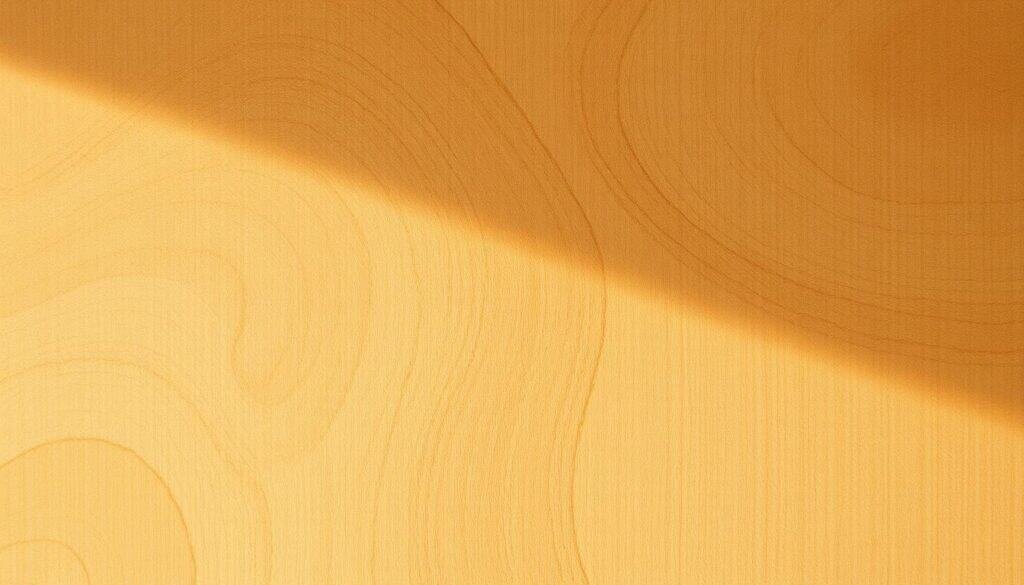
Wood flooring also adds warmth to kitchens. Its natural beauty creates a welcoming feel. Wood drawing ideas can inspire unique patterns for the flooring, adding character.
When mixing wood with stone or metal, balance is key. A balanced design ensures wood grain enhances the kitchen’s feel. This way, wood becomes a harmonious part of the kitchen’s ambiance.
Thoughtful use of wood grain in kitchen design makes spaces inviting and sophisticated. Whether in cabinetry, flooring, or decor, wood grain can make the kitchen a warm, welcoming heart of the home.
Creating Sanctuary Bedrooms with Soothing Wood Textures
Turning your bedroom into a peaceful place is easy with wood textures. The natural look of wood can make your room calm, great for relaxing after a busy day.
Adding wood grain to furniture or walls makes your bedroom warm and cozy. Wooden pieces like headboards or nightstands can also improve the look of your room.
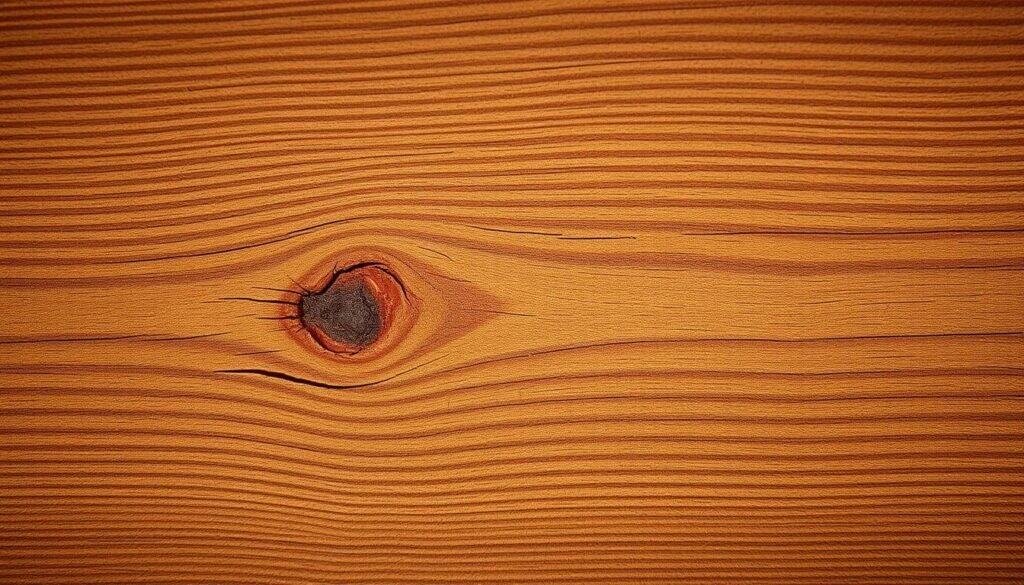
Using high-definition wood textures, or “wood texture hd,” in your bedroom design can make it even more calming. This can be done with wallpaper or digital displays. A wood texture background on walls or furniture can also bring a sense of unity.
Brown wood texture adds a sense of earthiness and stability to your bedroom. It helps create a place where you can relax and feel refreshed.
Bathroom Applications: Wood in Moisture-Rich Environments
Wood can make bathrooms feel luxurious if chosen and cared for right. Adding wood texture to bathrooms can make them warm and welcoming, like a spa.
Using wood in bathrooms comes with a big challenge: managing moisture. To tackle this, pick the right wood. Teak wood, for example, is great because it naturally resists moisture thanks to its oils.
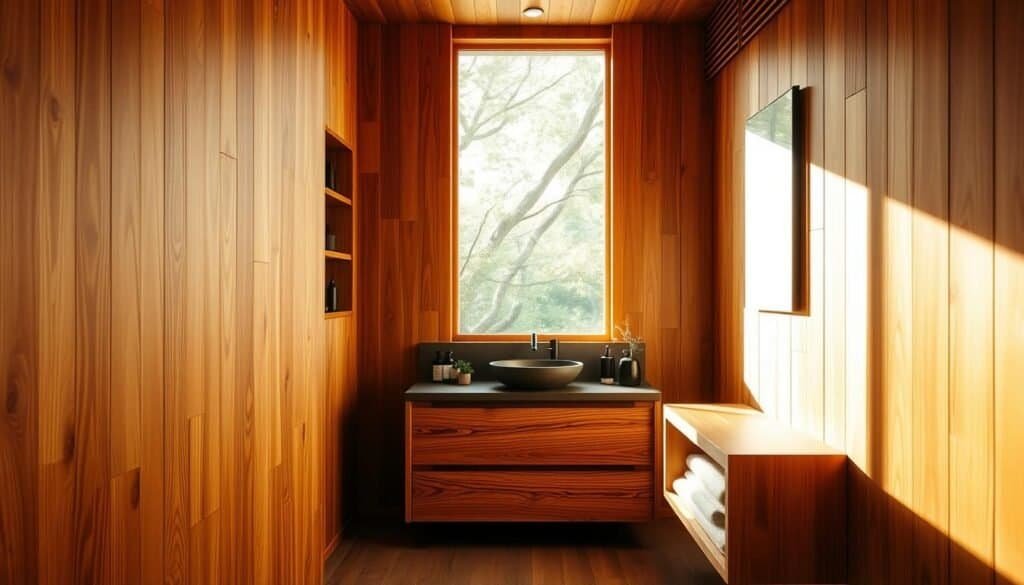
When picking wood for your bathroom, think about the pattern. The right pattern can make the space look richer and more interesting. For a cozy feel, rustic wood textures work well.
To keep wood in bathrooms looking good, regular care is key. Seal the wood often and make sure it’s well-ventilated. This way, wood can stay beautiful and warm in your bathroom for many years.
Contrasting Wood with Other Materials for Emotional Depth
Using wood with other materials adds depth to a space. Mixing wood with different textures and materials makes a room interesting and emotionally rich.
Wood texture design is key. It brings a natural feel that contrasts well with smooth materials like metal or glass. For example, wooden furniture with metal accents can make a room look sophisticated.
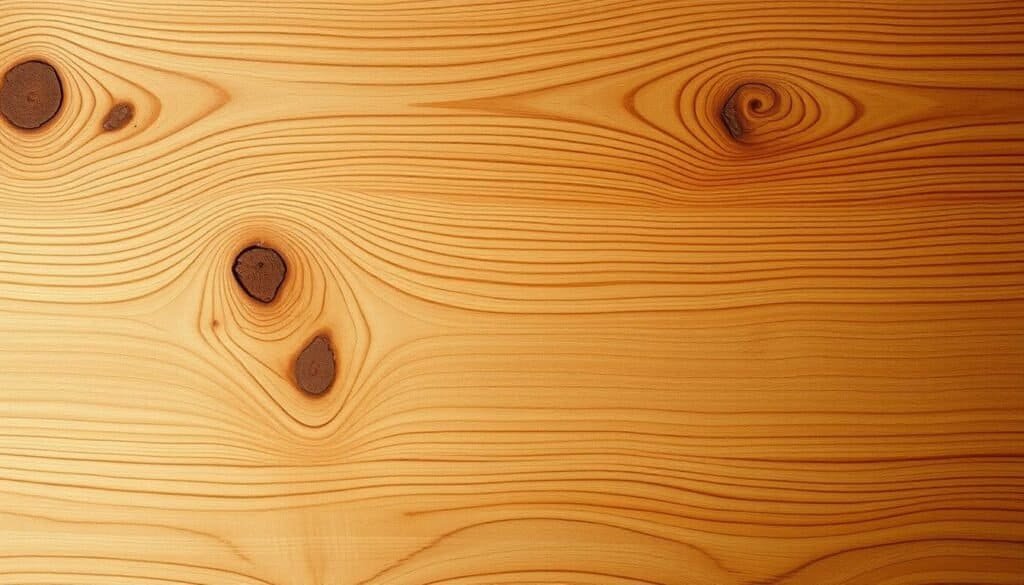
Textures have emotional effects. Wood feels warm and cozy. On the other hand, concrete or steel bring modernity and sleekness. The goal is to find a balance for the right mood.
Adding natural elements like stone or woven fibers boosts a space’s emotional depth. Mixing these with wood creates a space that encourages thought and interaction.
Even using wood in unique ways, like in tattoos, shows its power. It shows how wood can deeply affect our feelings and views.
Wood Treatments and Finishes for Different Emotional Effects
The finish on wood does more than protect it. It also shapes how we feel in a space. For example, the wood grain texture can be highlighted or toned down, changing the room’s mood.
Wood treatments can greatly alter wood’s look. A rough texture can be created with a wire brush or sanding, adding charm to a room. In contrast, a smooth finish can highlight the wood’s natural beauty, perfect for modern designs.
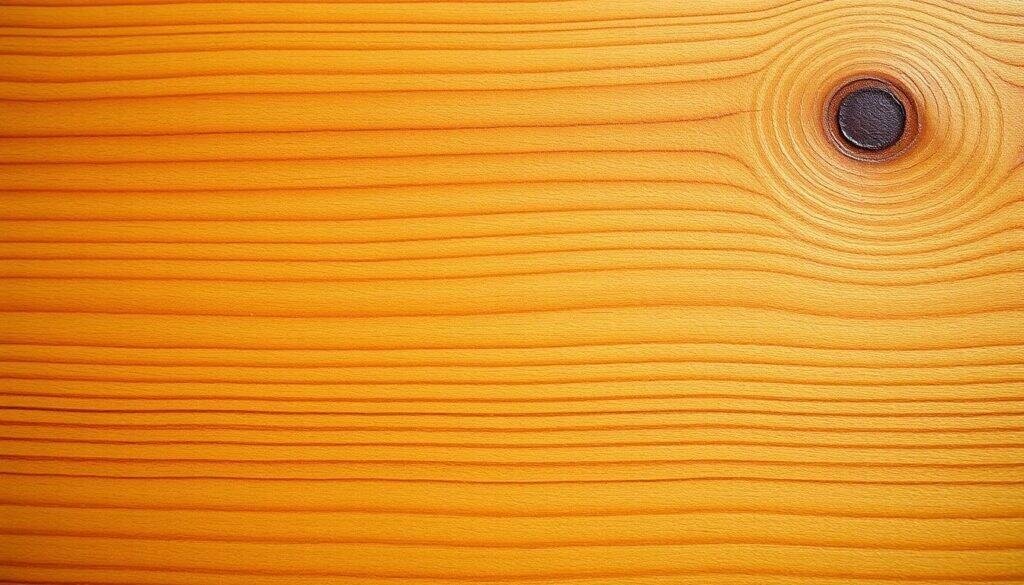
Raw wood texture brings warmth and coziness to a room. Using oil or wax can enhance this, showing off the wood’s natural colors and patterns. A wood texture printable is also handy, letting you try out different looks without the real wood.
Choosing the right wood treatment and finish can make a big difference. It lets homeowners and designers craft spaces that look great and feel special.
Sustainable and Ethical Considerations in Wood Selection
Today, picking wood that’s good for the planet is key in interior design. The wood we choose affects the environment and people’s lives. So, it’s important to think about where the wood comes from.
Choosing wood that’s harvested right is a big deal. It means the wood doesn’t harm forests or animals. This helps keep nature’s balance and supports fair work for local people.
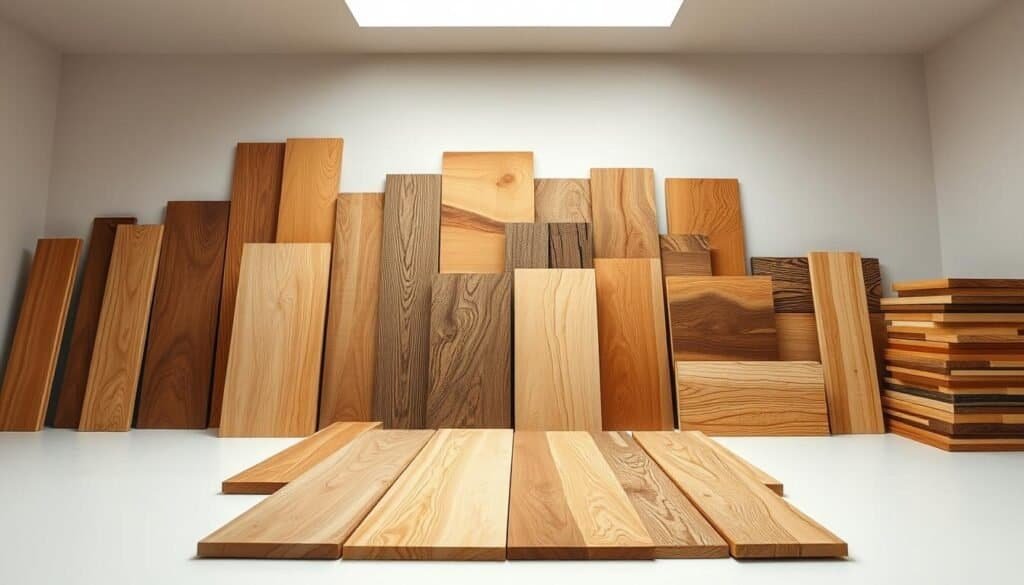
Using wood from old barns and buildings is a smart choice. It saves trees and keeps the wood’s history alive. This way, we get to enjoy wood that’s full of stories.
Industrial Salvage Applications
Wood from old factories or warehouses is another great option. It’s like giving old wood a new life. This method cuts down on waste and makes spaces unique.
By picking wood that’s good for the planet, we make a big difference. Whether it’s from old barns or new, sustainable sources, our choices matter a lot.
Maintenance Tips for Preserving Wood’s Character and Beauty
Keeping wood looking good is easy with a few simple steps. Regular care boosts its beauty and makes it last longer. Knowing how to maintain wood is key to keeping it in top shape.
Protecting wood from too much water is important. Wood can warp or crack from too much water. So, clean up spills fast and use coasters under glasses and plants. Also, applying a wood finish or sealant helps guard against moisture damage.
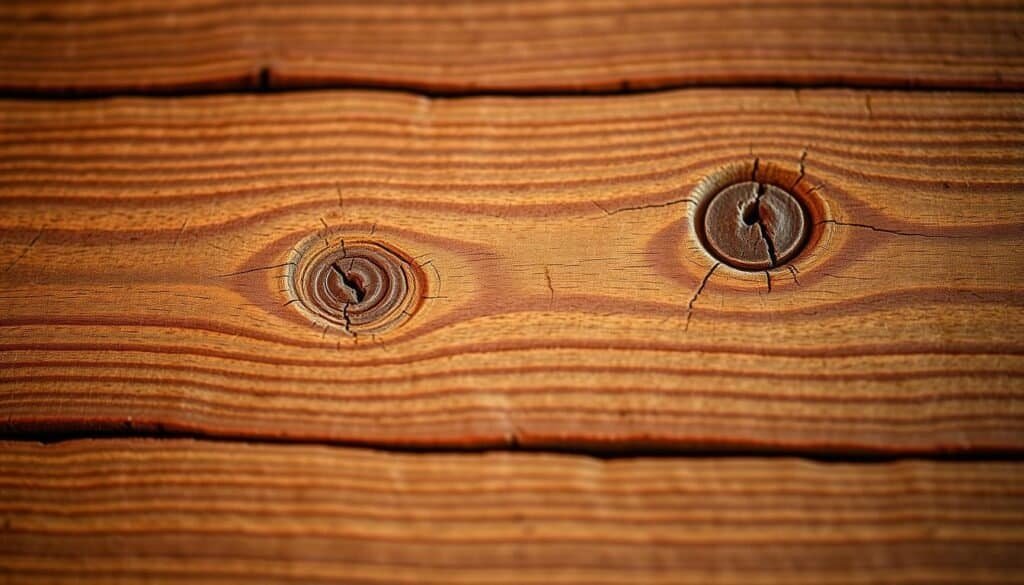
Dusting wood surfaces regularly is also essential. Use a soft, dry cloth to avoid damaging the finish or wood. For deeper cleaning, a damp cloth is okay, but dry it right away to avoid water damage.
By following these easy tips, you can keep your wood surfaces beautiful for a long time. Proper care is an investment in your wood’s beauty and durability.
Conclusion: Bringing Life to Modern Spaces Through Wood’s Natural Beauty
Adding wood grain and texture to modern interiors is a great way to add character. It can turn cold spaces into warm and welcoming ones. This is what we’ve learned in this article.
Knowing how wood affects us, picking the right wood, and using textures wisely helps. This way, spaces become not just pretty but also emotionally meaningful.
Wood makes spaces feel cozy and inviting, perfect for living rooms, bedrooms, and kitchens. The right treatments and finishes can highlight wood’s natural beauty. This creates a unique and welcoming feel.
As design trends change, using wood in modern interiors will always be a classic choice. It brings life and character to any space.
